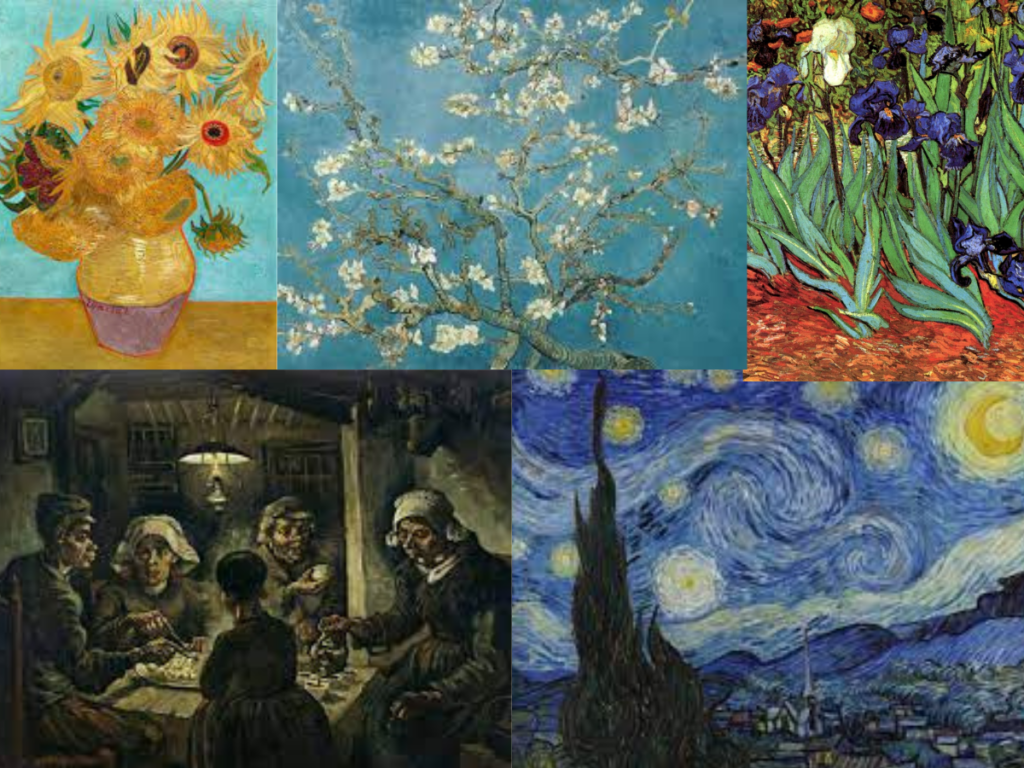
Hyderabad: Art aficionados in Hyderabad are being treated to a journey into the captivating world of Vincent Van Gogh. An immersive exhibition dedicated to the legendary artist began in the city on Friday, March 29 and it will go on till April 10.
Hosted at the Hitex Exhibition, this unique showcase aims to take the visitors on an extraordinary exploration of one of history’s most loved painters.
Venturing into the immersive experience, visitors find themselves immersed in the life and times of Van Gogh, delving deep into his personal struggles, romantic pursuits, and artistic metamorphosis.
Through this immersive journey, visitors gain profound insights into the enigmatic mind of the artist, unraveling the inspirations that fueled his iconic masterpieces.
But the adventure doesn’t end there. There is a mesmerising ‘Infinity Room’ that leaves people in awe as fairy lights twinkle, casting a magical glow reminiscent of Van Gogh’s famed ‘Starry Night’.
Visitors can wander through the halls adorned with over 70 of his works, projected in stunning detail. From Van Gogh’s early days at the academy to the masterpieces created during his time in the mental asylum, every brushstroke tells a story.
His letters are also on display. A gaze upon his self-portraits makes one marvel at the depth of his genius. The illusionary beauty of this immersive experience along with a soothing music brings joy in its purest form.

For those who wish to carry a piece of this magic home, there is an exquisite Van Gogh-themed merchandise available for purchase. From t-shirts to postcards, coasters to cups and diaries, there’s something for every art enthusiast.
When Siasat.com asked how the visitors felt at the Van Gogh immersive experience, one of them said, “I wanted to see Van Gogh as not a mad man but the man!” Another said, “I think he just didn’t paint portraits; he painted magic and happiness.”
“From Irises to Café Terrace at night to the Potato Eater, we need to remember that he created his paintings despite his mental illness, not because of it. The immersive experience brings us closer to his perspective of art and the world,” said another visitor.
Van Gogh at a glance
Vincent Van Gogh, a Dutch painter, is regarded as one of the greatest artists in history. Born on March 30, 1853, in the Netherlands, Van Gogh produced over 2,100 artworks and wrote 820 letter during his life, though he only sold one painting during his lifetime.
Van Gogh’s works are characterised by their bold colors, expressive brushwork, and emotional intensity.
Throughout his life, Van Gogh struggled with mental illness and poverty, which ultimately led to his tragic death by suicide in 1890 at the age of 37.
Vincent Van Gogh finished one of his very first masterpieces, Irises, which was painted after he returned to asylum from his visit to the outside world. He was heavily inspired by Japanese paintings, which is evident in Almond Blossom (1890) and The Haystacks (1888). His work in the final five years was characterised by a bright color palette as compared to his early paintings, like The Potato Eaters. Sunflower (1888) was painted in a period that coincided with the invention of many new synthetic colours that Vincent took advantage of.
He created the famous ‘Starry Night’ with his signature style of short brush strokes with impasto (where paint is applied thickly).
In many of his letters, he talked about the starry night: “This morning I saw the country side from my window a long time before sunrise with nothing but the morning star, which looked very big,” he said in a letter written on June 2, 1889. He created this painting from his imagination; he included a cypress (which represents death in Mediterranean culture) and an idealised village.

Van Gogh often spoke about art as a new religion and a way to console people, and he dismissed Starry Nights and most of his paintings as failures. As he wrote to Emily Bernard on November 20, 1889, “And yet, once again, I allowed myself to be led astray into reaching for stars that are too big. Another failure, and I have had my fill of that.”
His art also emphasised the changing and renewing power of seasons, and during the Vincent Van Gogh timeline, it was a critical time when artists shifted from narrative to expressing themselves in new ways of seeing, and Vincent’s work paved the way for modern art.



